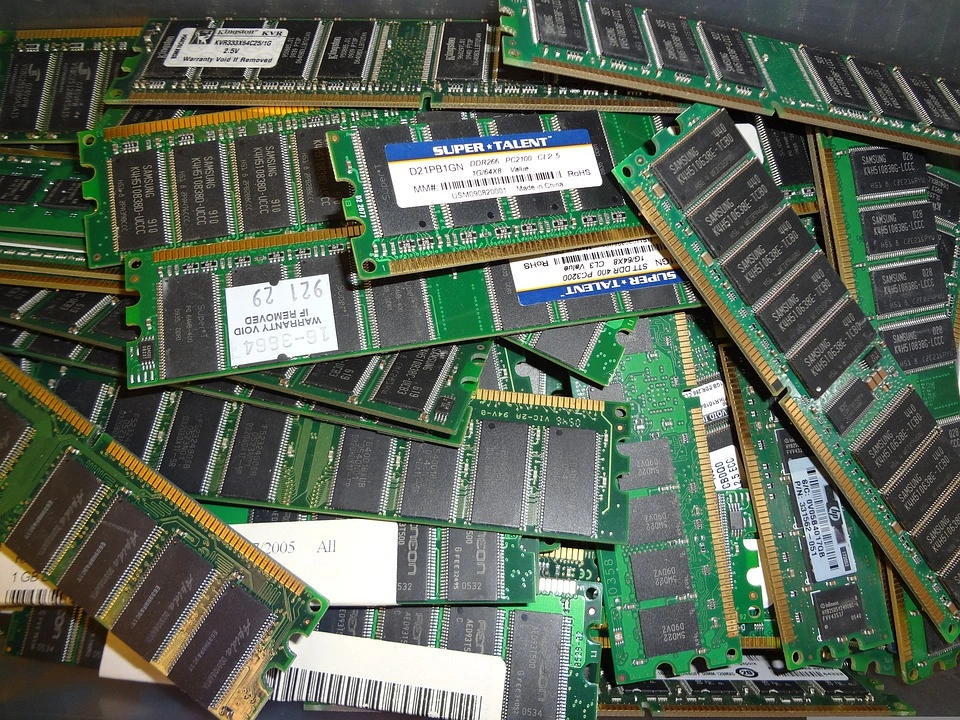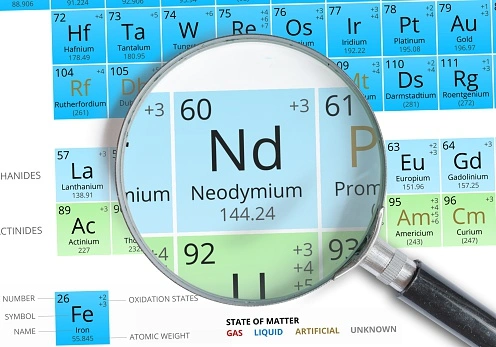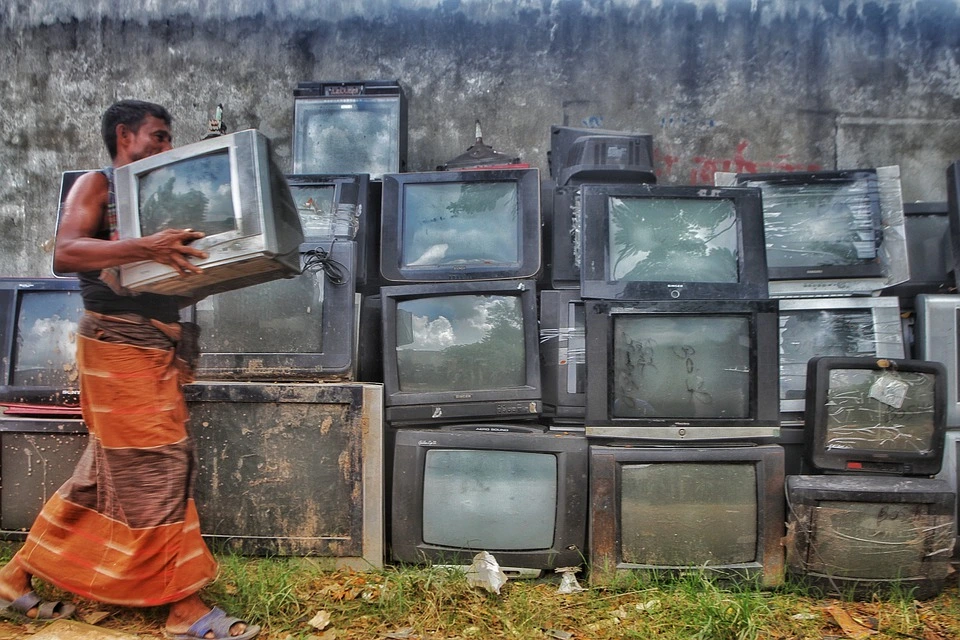Electronics are chock full of non-renewable precious metals, plastics, and toxic materials like lithium, cobalt, and lead.
In 2019 a UN report sounded the alarm that worldwide e-waste adds up to about 50 million tons per year! Only about 20% of that waste gets officially recycled.
Let’s dive into e-waste to discover the benefits of recycling electronics.
Benefits of Recycling Electronics

In general, the benefits of recycling are environmental. Environmental benefits include the recovery of non-renewable materials and the containment of toxic substances.
- Reduces Production Pollution
- Saves Non-renewable Resources
- Keeps Toxic Elements Out of the Landfill
- Helps Combat Climate Change
- Protects Clean Water Resources
- Provides Cheaper Materials for Manufacturing
- Protects Human Health
- Avoids Hazardous “Informal” Recycling
- Creates Environmentally Friendly Work
- Creates a Circular Economy
There are so many reasons why electronics simply must be recycled. This discussion is really just the tip of the iceberg, but let’s dive into this important topic.
What are the Types of E-waste?

E-waste is anything electronic. If it has wires, a plug, microchips, batteries, or a screen it’s e-waste.
- Appliances
- Cellphones
- Alarm clocks
- Watches
- Laptops
- Tablets
- E-readers (Kindle, etc.)
- TVs (all kinds)
- Computer monitors and components
- DVD/CD/Blu-ray players
- mp3 players
- Calculators
- Flashlights
The list goes on and on. The more technologically advanced our world becomes, the more we are dependent on electronic devices.
These electronic devices are full of precious minerals and toxic elements that should never be discarded in landfills to decay or be burned.
We have to face our environmental problems and solutions head-on to solve the problem of e-waste pollution. Let’s check out 10 incredible benefits of recycling e-waste.
10 Benefits of Recycling E-waste

Let’s take a closer look at the 10 environmental benefits of recycling e-waste.
1. Reduces Production Pollution
Only about 20% of worldwide e-waste is recycled, which is an absolute shame. It’s also one of our major sources of truly toxic pollution.
Every bit of precious metal that gets discarded from electronics will have to be replenished with raw materials to make the next piece of electronics.
So, when you toss an old cell phone and buy a new one, you’re creating a break in the chain of materials that could have been circular if it had been recycled.
The more mining that’s needed to gather the materials used in electronics like gold, silver, copper, cadmium, and lithium, the more pollution is emitted into the atmosphere.
Mining creates toxic dust in some cases, uses tons of fossil fuels, and requires ore processing which emits carbon into the atmosphere.
From beginning to end, the more raw materials we have to use in manufacturing, the more pollutive we are as a culture.
Pollutants released from discarded electronics include arsenic, chromium, cadmium, mercury, lead, and more. These elements are detrimental to human health, animal health, and aquatic animals.
2. Saves Non-renewable Resources

Aside from the toxic waste that leaches into the soil in landfills from decaying batteries and electronics, there are precious metals that are being lost.
This UN report pointed out that there is 100 times more gold per ton of electronic waste than in a whole ton of gold ore. That’s a crazy amount of precious metals being buried or burned.
Gold is not the only non-renewable resource used in electronics manufacturing. Some of the metals needed to make your cell phone are even in short supply.
Here’s how many precious materials can be recovered from every 1 million recycled cell phones and computers!
| 1 Million Cell Phones | 1 Million Computers | |
| Gold | 75 pounds | 441 pounds |
| Silver | 772 pounds | 4,409 pounds |
| Copper | 35,000 pounds | 1,543,240 pounds |
| Palladium | 33 pounds | 110 pounds |
By recycling electronics we can reuse the precious metals located inside and save our dwindling supply of raw natural resources for later use.
According to USA Today, Americans throw away 416,000 cell phones every day. That’s 151,840,000 cell phones every year!
We could recover over 11 billion pounds of gold yearly by recycling them! The value of these materials is staggering and we’re just throwing it away.
3. Keeps Toxic Elements Out of the Landfill
Every piece of electronics that goes into the landfill leaches toxic chemicals into the environment.
As electronics decay or are burned they release deadly chemicals like arsenic, cadmium, mercury, and lead into the air, soil, and water.
These things can have a detrimental effect on every living thing, as we’ll discuss later in this article.
When you recycle electronics you ensure that the toxic chemicals inside the electronics get handled properly and disposed of safely.
4. Helps Combat Climate Change
According to the Climate Institute, around 20 to 25 million tons of e-waste (of all kinds) are generated yearly.
- All forms of e-waste generate carbons. Deloitte Global states that cell phones manufactured in 2022 alone will generate 146 million tons of carbon dioxide.
This is generated through mining, refining, shipping, and use.
- They state that each cell phone generates 85 kilograms of emissions in its first year of use! They are carbon-laden devices.
All of this carbon contributes greatly to climate change, and each electronic device we own contributes more to the problem.
- In 2019 discarded refrigerators and air conditioners alone emitted about 98 megatons of carbon equivalents into the atmosphere.
Recycling decreases the carbon emissions per electronic unit by 80% while ensuring that materials used to manufacture can be used again.
When precious metals are recycled they’re just as good as raw materials, but they’re cleaner, cheaper, and cause only a fraction of the carbon emissions of their raw counterparts.
5. Protects Clean Water Resources

Clean water is necessary for life for every creature on this planet.
Discarded e-waste leaches chemicals and heavy metals into the groundwater, polluting it. Unfortunately, we end up drinking this polluted water.
In some areas of the world, specifically in China and Hong Kong, residents near “recycling centers” can’t drink any local water because it’s so contaminated.
It can also leach into ocean water. This is especially a problem in areas where electronics are piled in mountains of recyclables to be processed by hand.
These rudimentary recycling create a massive release of carbons, and release toxic chemicals into the air.
Furthermore, exposure to the elements allows chemicals and heavy metals to leach into waterways and marine environments.
Clean recycling ensures that this doesn’t happen. This is also one reason that the United States needs to get serious about recycling electronics at home instead of sending them abroad.
6. Provides Cheaper Materials for Manufacturing
When it comes to electronics, the most expensive parts are those that require mining.
- Gold
- Silver
- Paladium
- Copper
- Lithium
- Lead
When these materials have to be mined for manufacturing the cost in carbon output, fossil fuel consumption, and time to market is high.
When these materials can be recovered by a recycler then sent back to the manufacturer ready-to-use, the cost is much lower.
Countries like Japan have strict electronics recycling laws that split the cost of recycling between manufacturers and consumers.
Not all components in electronics can be directly recycled. Some of it has to be disposed of in other ways, but we can recover millions of tons of precious metals and rare earth metals by recycling.
These laws help to create cheaper materials for manufacturing while ensuring that electronics stay out of landfills and get turned into new electronics instead.
Check out this great Business Insider video to see e-recycling in action.
7. Protects Human Health
Proper recycling ensures that toxic chemicals found in electronics don’t get released into the atmosphere, water, and soil.
When toxins found in electronics and e-waste are released into the environment we’re exposed to them.
- Refrigerants
- Lead
- Mercury
- Arsenic
- Dioxins
- Plastic chemicals
These things can be detrimental to human health. They aren’t necessarily released while you’re using your devices, but when it gets smashed apart in a landfill the toxins are exposed and released.
Proper recycling (in a clean facility) ensures that these toxins are mitigated and properly disposed of for the health of workers, residents, and the environment.
8. Avoids Hazardous “Informal” Recycling

A report by the World Health Organization explains that during e-recycling, humans can be exposed to over 1,000 different toxic chemicals.
This exposure isn’t a problem in developed recycling centers.
However, while the United Nations estimates that 10-40% of US e-waste is exported for recycling, nobody knows the real numbers because there’s a huge amount of recycling fraud happening in the US.
The problem with sending it overseas is that even so-called “green recyclers” are maximizing profits on recyclables by having them dismantled by hand.
- Even children are often used to help pluck apart small components to recover gold, silver, and other precious metals. They are exposed to toxins that inhibit brain development and cause cancer.
- When workers pry apart LCD screens they break the fluorescent tubes releasing mercury vapor – a powerful neurotoxin.
- Workers are exposed to dioxins – powerful carcinogens – as they use coal fires or backyard grills to burn plastic insulation from copper wires.
These are just a few of the human atrocities that are connected with the way that the world is currently recycling e-waste.
This would not be a problem if the United States took on the responsibility of recycling its own waste.
9. Creates Environmentally Friendly Work
E-waste recycling is just one example of an overlooked industry with massive potential for the future.
Jobs in this green recycling sector could provide opportunities for good income for workers that can perform this materials recovery in a safe way.
Furthermore, workers at informal recycling centers can’t always recover all available materials because they lack the education or tools to do so.
This means that a lot of recyclable materials still end up as pollutants in a landfill. Even worse, many of these things get burned releasing dangerous toxins and carbons into the atmosphere.
- The Geneva Environment Network points to cobalt recovery as a prime example of the inefficiency of informal recycling.
- While gold, silver, and copper recovery is very high – around 97% – other rare materials like cobalt are recovered at a rate of about 30%.
- This is much lower than the 95% recovery of cobalt that can be accomplished at regulated recovery plants.
When the United States embraces recycling of e-waste we’ll also open the doors for greater material recovery and great jobs which will also help to save the planet.
10. Creates a Circular Economy

A circular economy is one where materials can be used and then recovered to be used again.
This creates an unending circle between manufacturers and consumers using the same materials over and over.
Materials that are recovered and recycled from electronics, especially precious metals and rare earth metals never lose their quality from recycling. They can be used again and again – forever.
So instead of throwing away these resources and mining new ones, the focus has to be put on reusing them forever so we can enjoy our new tech devices without harming the planet.
Why Is There So Much E-waste?
Electronics seem to get more disposable each year, and that’s not just in our imaginations.
Manufacturers create electronics that won’t work past the first year or two.
This creates an unending market of willing buyers for their latest-greatest devices.
It’s also incredibly wasteful and harmful for the earth.
Manufacturers use recyclability as their excuse for making disposable electronics, but as consumers we need to demand more accountability from manufacturers.
- Electronics that last for many years without a degrade in function.
- Ongoing support for older models instead of aging them out after just a few years.
- Updates instead of brand-new models without significant improvements.
- Mandatory recycling inside the United States – no exports allowed.
- Mandatory use of recycled materials before raw materials can be used.
These types of policies can be mandated by governments, but as the regulations placed by California, Oregon, and Washington prove, companies can easily greenwash their practices and get by with it.
It’s ultimately up to consumers to put their money where their values are and make companies change to keep up.
Economic Benefits of E-waste Recycling

Economic benefits of e-waste recycling include materials recovery and component resale.
Companies use a variety of strategies to make money on e-waste while helping the environment as much as possible.
- When they receive components that are operational they can often wipe the data then resell them on places like Ebay.
- Recyclers can strip wire, plugs, and other recoverable components that can be sold as-is for use by electronics companies and refurbishing companies.
- Recyclers can recover individual components like functioning chips and boards that can be refurbished and sold.
- Finally, recyclers can shred electronics and recover precious metals and rare earth metals using automated separators.
The key for recyclers is to find ways to make money by recovering components. Because of this they’re extremely vulnerable to commodities prices for things like steel and copper.
If the market for steel, for instance, falls drastically, then it may not be worth it to try to recover steel and sell it because there isn’t a profit to be made.
Greater economic benefits can be achieved by pairing manufacturers and recyclers.
Panasonic and Redwood Materials to reap the benefits of recycling batteries – a perfect example of a recycling/manufacturing partnership.
Tesla car batteries are sent to Redwood Materials for recycling. The recovered materials are then sent to Panasonic to be turned into new Tesla car batteries.
Final Thoughts
E-waste is a massive problem and we’re all contributors in one way or another. So how can we collectively make a difference?
We can start by spreading awareness in our communities about e-waste recycling options. If e-waste recycling isn’t accessible, let’s make it a priority to get service in our communities.
We can hold recyclers accountable for where they’re sending our e-waste for recycling.
We can be happy with our current electronics instead of falling for the marketing strategies that make us want the new models every year.
We have to keep in mind that consumers make it possible for manufacturers to over-produce cheap products and pawn them off on us annually. If we say no, they’ll have to do business differently.
What are your thoughts about e-waste? Do you recycle your e-waste? Tell us about how experiences in the comments below!
